
How to Use SparkFun IMU Breakout - MPU-9250: Examples, Pinouts, and Specs
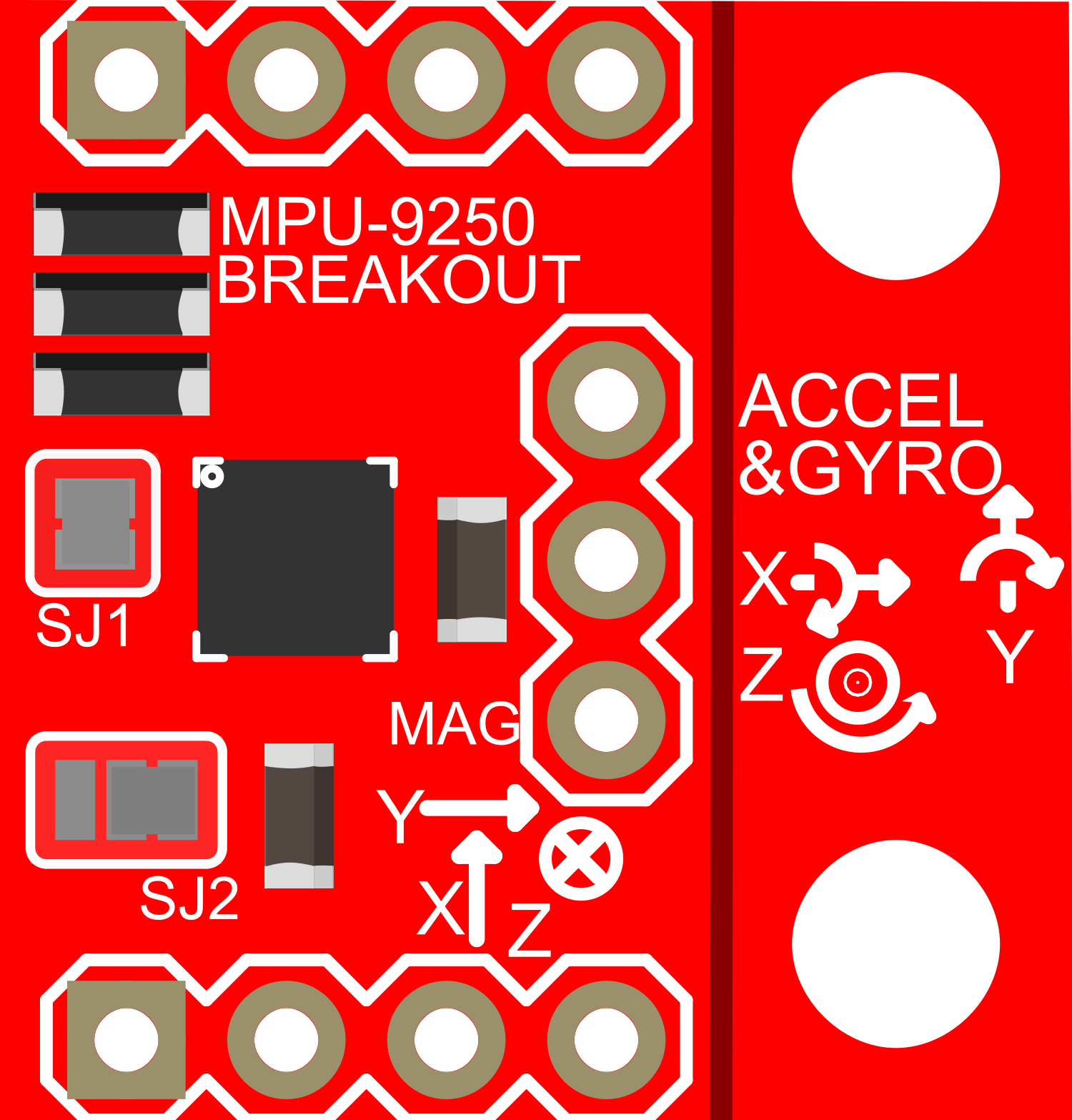
 Design with SparkFun IMU Breakout - MPU-9250 in Cirkit Designer
Design with SparkFun IMU Breakout - MPU-9250 in Cirkit DesignerIntroduction
The SparkFun IMU Breakout - MPU-9250 is a compact, high-performance 9-axis motion tracking device that combines a 3-axis accelerometer, a 3-axis gyroscope, and a 3-axis magnetometer. This integrated sensor package is ideal for a wide range of applications, including robotics, drone flight control, virtual reality, and motion analysis. The MPU-9250 communicates via I2C or SPI, offering flexibility for various microcontroller interfaces.
Explore Projects Built with SparkFun IMU Breakout - MPU-9250
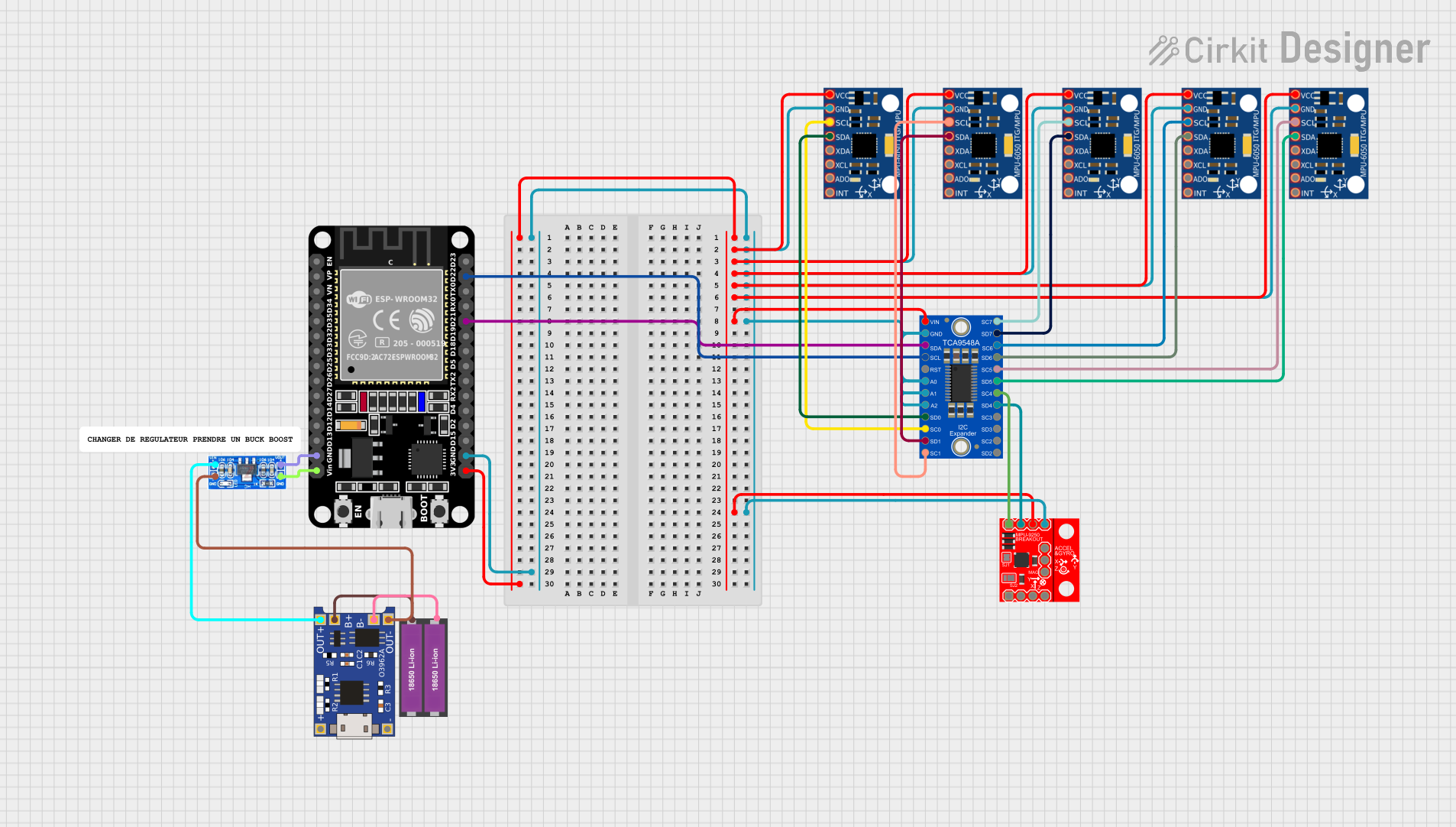
 Open Project in Cirkit Designer
Open Project in Cirkit Designer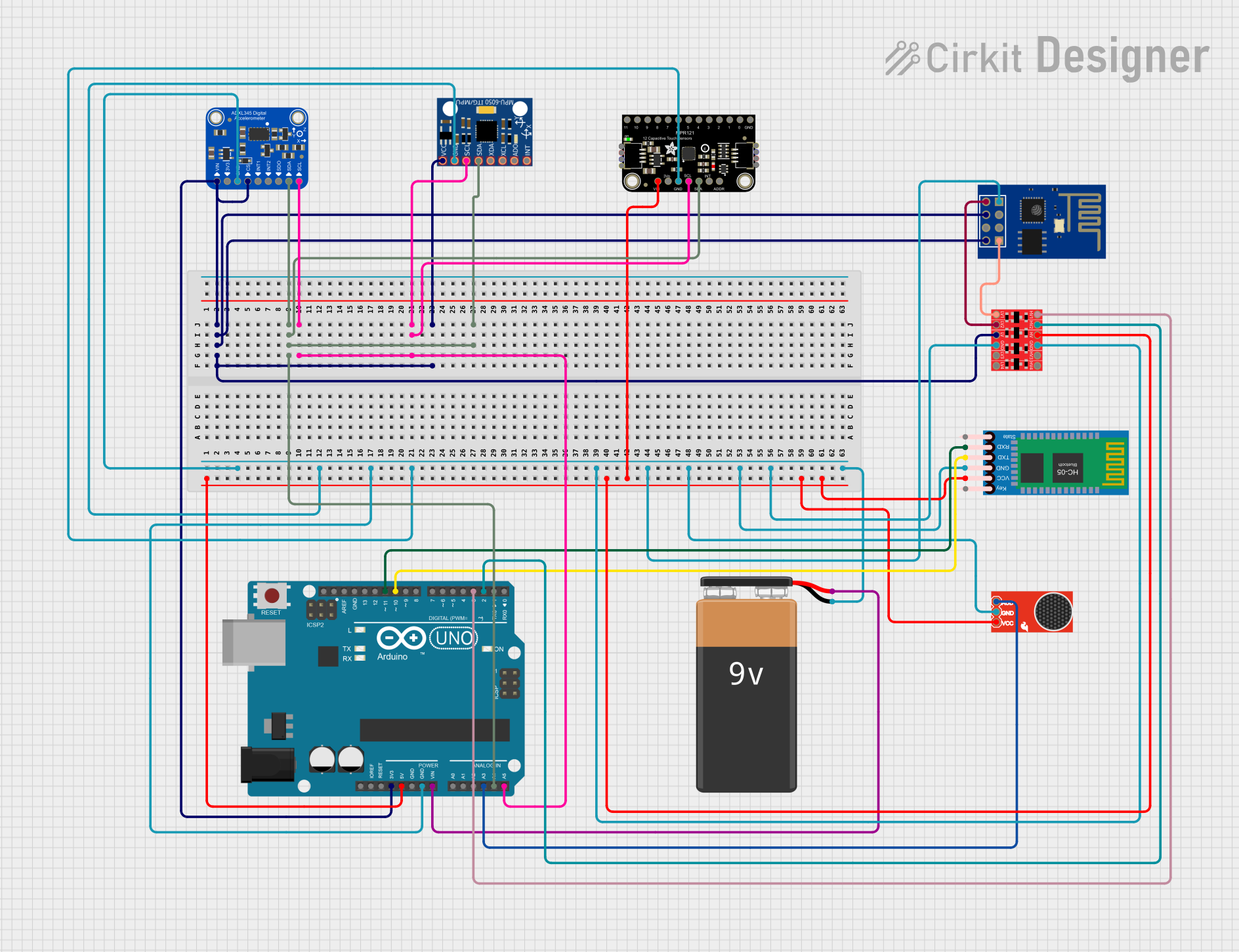
 Open Project in Cirkit Designer
Open Project in Cirkit Designer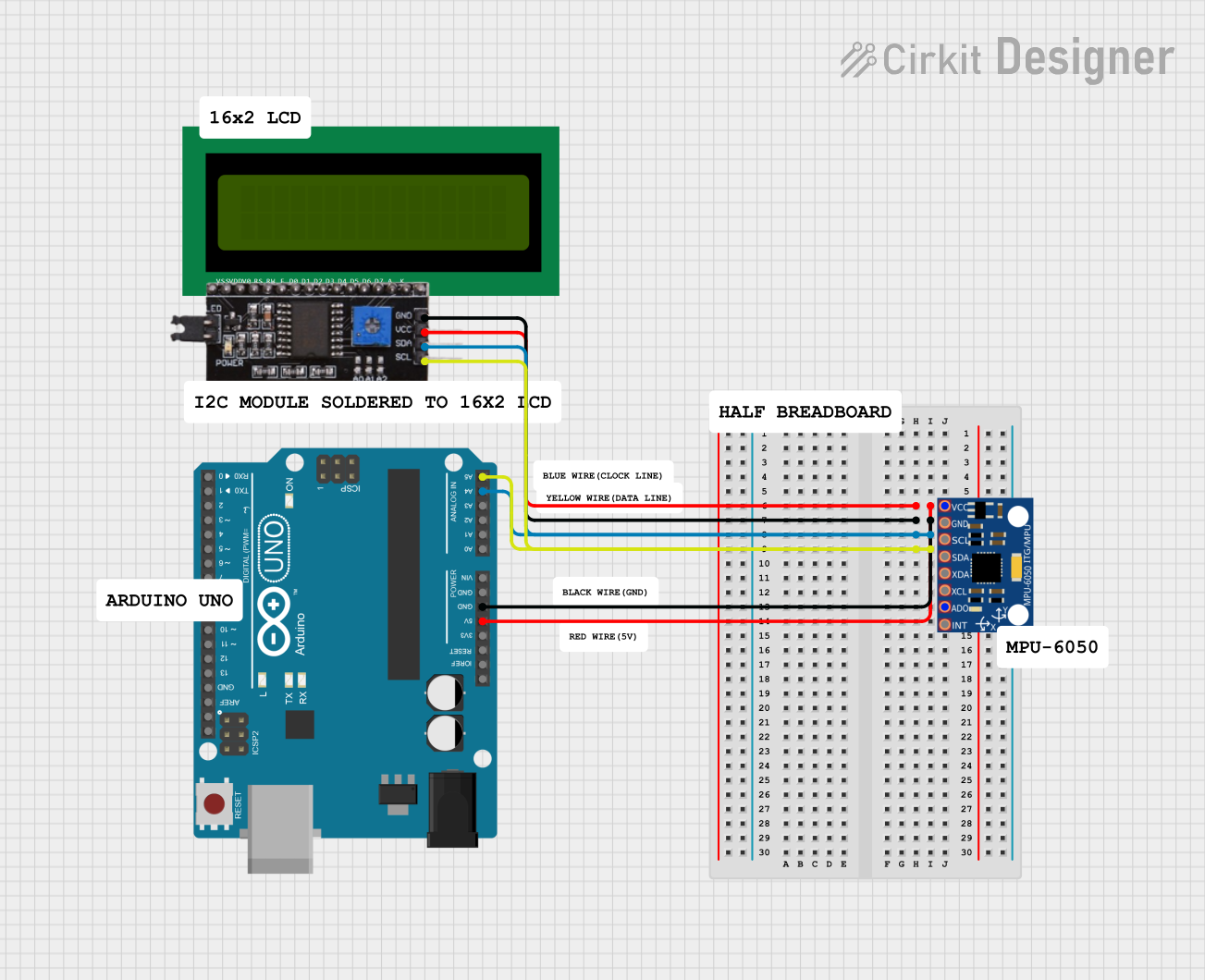
 Open Project in Cirkit Designer
Open Project in Cirkit Designer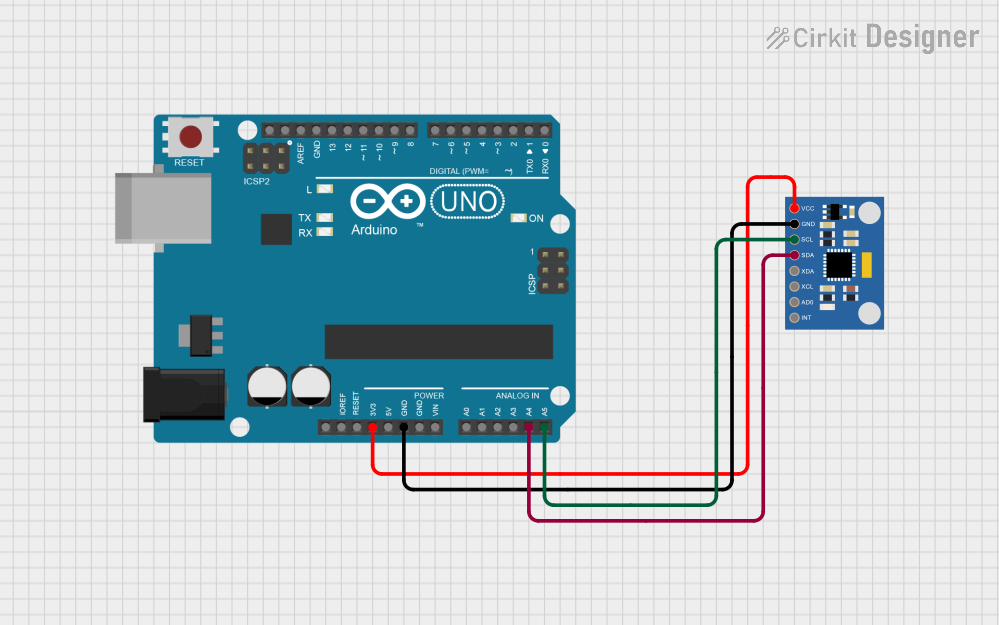
 Open Project in Cirkit Designer
Open Project in Cirkit DesignerExplore Projects Built with SparkFun IMU Breakout - MPU-9250

 Open Project in Cirkit Designer
Open Project in Cirkit Designer
 Open Project in Cirkit Designer
Open Project in Cirkit Designer
 Open Project in Cirkit Designer
Open Project in Cirkit Designer
 Open Project in Cirkit Designer
Open Project in Cirkit DesignerTechnical Specifications
Key Technical Details
- Supply Voltage (VDD): 2.4V - 3.6V
- Operating Current: 3.2mA
- Gyroscope Range: ±250, ±500, ±1000, ±2000 degrees/sec
- Accelerometer Range: ±2g, ±4g, ±8g, ±16g
- Magnetometer Range: ±4800µT
- Communication: I2C (up to 400kHz) and SPI (up to 1MHz)
- Operating Temperature Range: -40°C to +85°C
Pin Configuration and Descriptions
| Pin Number | Pin Name | Description |
|---|---|---|
| 1 | VDD | Power supply (2.4V - 3.6V) |
| 2 | GND | Ground connection |
| 3 | SDA/SDI | I2C Data Line / SPI Serial Data In |
| 4 | SCL/SCLK | I2C Clock Line / SPI Serial Clock |
| 5 | NCS | SPI Chip Select (Active Low) |
| 6 | INT | Interrupt Output |
| 7 | FSYNC | Frame Synchronization (Optional) |
| 8 | AD0/SDO | I2C Address Selection / SPI Serial Data Out |
Usage Instructions
Integration with a Circuit
To use the MPU-9250 in a circuit:
- Connect VDD to a 2.4V - 3.6V power supply.
- Connect GND to the ground of your power supply.
- For I2C communication, connect SDA/SDI to your microcontroller's SDA line and SCL/SCLK to the SCL line.
- For SPI communication, connect SDA/SDI, SCL/SCLK, NCS, and AD0/SDO to the corresponding SPI pins on your microcontroller.
- Optionally, connect INT to an interrupt-capable pin on your microcontroller to use the interrupt feature.
- If using the FSYNC feature, connect it to a digital output on your microcontroller.
Important Considerations and Best Practices
- Ensure that the power supply is within the specified voltage range to prevent damage.
- Use pull-up resistors on the I2C lines if your microcontroller does not have built-in pull-ups.
- When using SPI, ensure that the NCS pin is pulled high to disable the device when not in use.
- For accurate readings, calibrate the magnetometer in the environment where it will be used.
- Avoid placing the MPU-9250 near magnetic fields that could interfere with the magnetometer.
Example Code for Arduino UNO
#include <Wire.h>
#include <MPU9250.h>
MPU9250 IMU(Wire, 0x68);
int status;
void setup() {
Serial.begin(115200);
while (!Serial) {} // Wait for serial port to connect
status = IMU.begin();
if (status < 0) {
Serial.println("IMU initialization unsuccessful");
Serial.println("Check IMU wiring or try cycling power");
while (1) {}
}
}
void loop() {
if (IMU.readSensor() == 0) {
Serial.print("AccelX: ");
Serial.print(IMU.getAccelX_mss(), 6);
Serial.print("\tGyroX: ");
Serial.print(IMU.getGyroX_rads(), 6);
Serial.print("\tMagX: ");
Serial.print(IMU.getMagX_uT(), 6);
Serial.println();
// Add additional print statements for other axes as needed
}
delay(100);
}
Troubleshooting and FAQs
Common Issues
- No data or incorrect data: Ensure that the wiring is correct and that the correct communication protocol (I2C/SPI) is selected in your code.
- Inaccurate readings: Calibrate the sensor, especially the magnetometer, and ensure that there are no interfering magnetic fields.
- Device not recognized: Check the power supply and connections. Also, verify that the correct I2C address or SPI chip select is used.
Solutions and Tips for Troubleshooting
- Double-check all connections and solder joints.
- Use a logic analyzer or oscilloscope to verify communication signals.
- Reset the power to the MPU-9250 if it is unresponsive.
- Consult the MPU-9250 datasheet for detailed information on registers and configuration settings.
FAQs
Q: Can the MPU-9250 be used with a 5V microcontroller? A: Yes, but ensure that the power supply to the MPU-9250 is within the specified range and use logic level converters for communication lines.
Q: How do I change the I2C address of the MPU-9250? A: The I2C address can be changed by connecting the AD0/SDO pin to VDD or GND.
Q: What is the default I2C address of the MPU-9250? A: The default I2C address is 0x68 when AD0/SDO is connected to GND and 0x69 when connected to VDD.
Q: How can I verify that my MPU-9250 is functioning correctly? A: Run the example code provided and check the serial output for consistent and reasonable data readings.